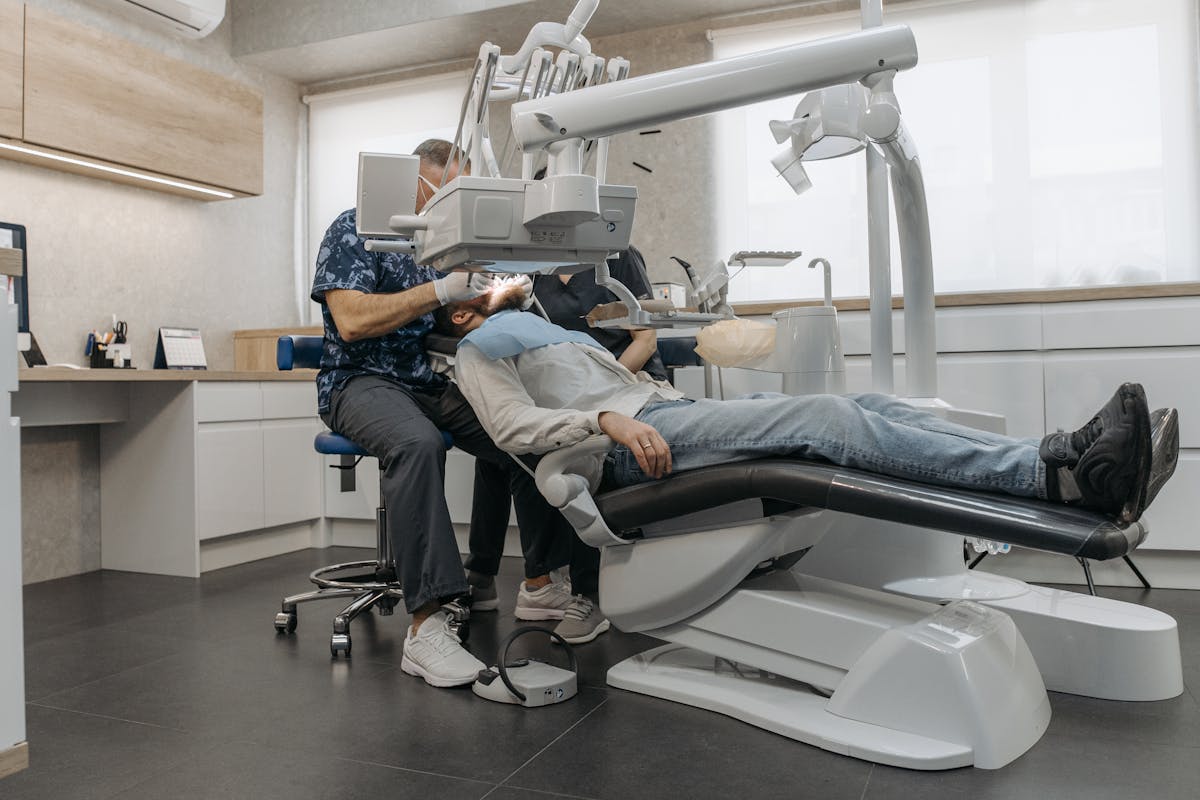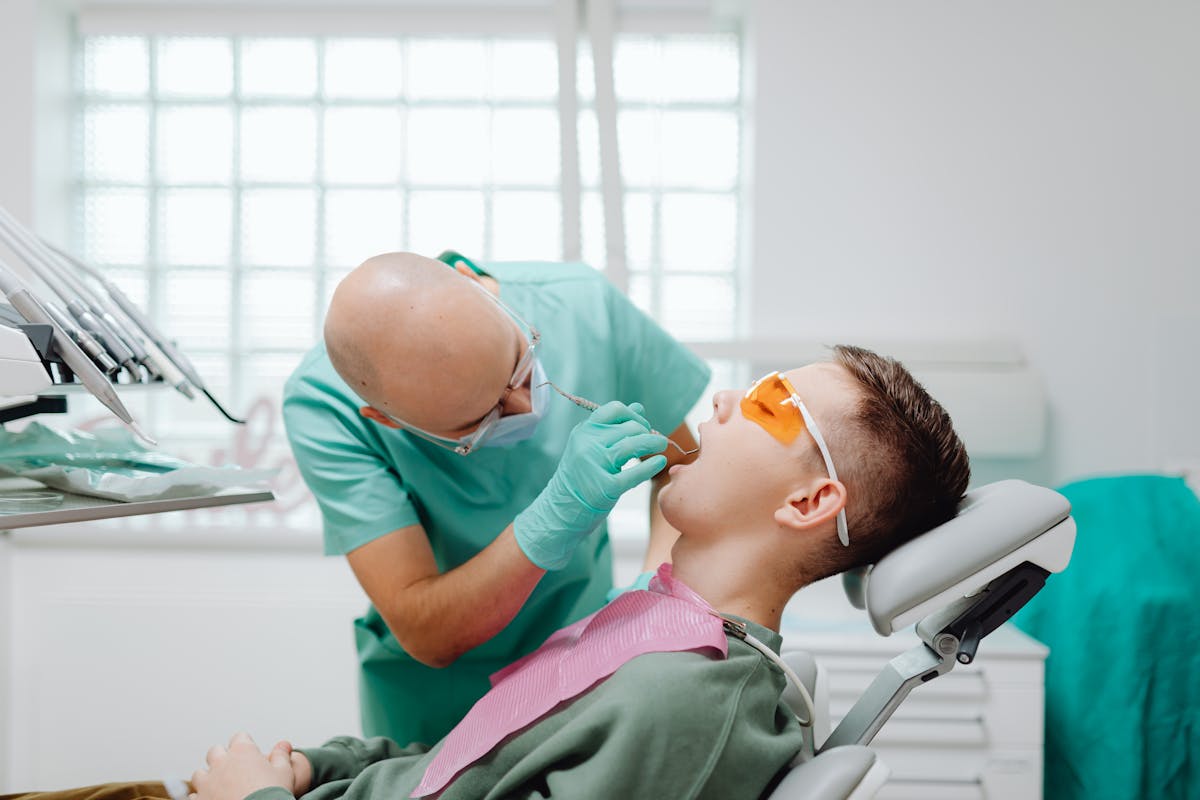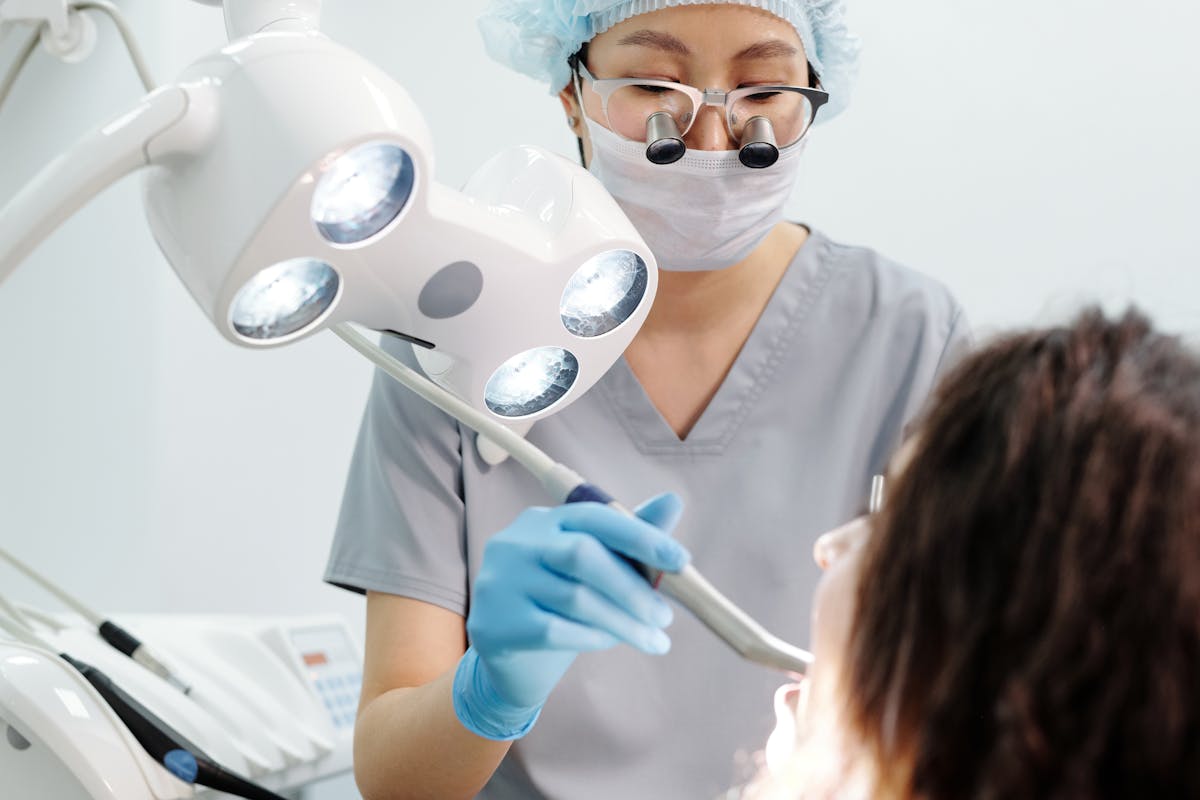Periodontal Treatment St, Graham, TX

Periodontal Treatment St in Graham, TX, offers a thorough and clinically advanced approach to managing gum disease. Employing state-of-the-art diagnostic tools such as digital imaging and laser technology, the clinic provides tailored treatment plans designed to promote tissue regeneration and mitigate inflammation. Their methodologies include both non-surgical and surgical interventions, ensuring a complete process for achieving peak periodontal health. Discover how these personalized therapies can greatly enhance oral wellness.
Understanding Gum Disease and Its Impact
Periodontal disease, commonly referred to as gum disease, is a chronic inflammatory condition affecting the supporting structures of the teeth, including the gingiva, periodontal ligament, and alveolar bone. This pathological condition arises from the accumulation of bacterial plaque biofilms on the tooth surfaces, leading to an immune response that inadvertently damages periodontal tissues. Clinically, gum disease manifests as gingivitis in its initial stages, characterized by erythema, edema, and bleeding of the gingiva. If untreated, it progresses to periodontitis, marked by the destruction of connective tissue and alveolar bone, ultimately jeopardizing tooth stability. The sequelae of advanced periodontal disease not only compromise oral health but also have systemic implications, linking it to conditions such as cardiovascular disease and diabetes mellitus. Understanding these impacts is crucial for effective management and prevention.
The Importance of Regular Periodontal Check-Ups
Regular periodontal check-ups play a critical role in maintaining ideal oral health, as they enable the early detection and management of periodontal disease. These examinations are essential for evaluating gum health and identifying signs of inflammation, recession, or attachment loss. Dental professionals employ thorough evaluations to monitor periodontal pockets, gingival tissue integrity, and plaque accumulation. By integrating preventive care strategies, such as scaling and root planing, clinicians can mitigate disease progression and preserve alveolar bone structure. Regular visits facilitate the tailored implementation of oral hygiene protocols and therapeutic interventions, optimizing patient outcomes. Furthermore, these check-ups serve as a platform for educating patients on effective maintenance techniques, thereby reinforcing long-term adherence to preventive care regimens and greatly reducing the incidence of severe periodontal complications.
Advanced Diagnostic Tools and Techniques
Periodontal treatment in Graham, TX, now incorporates cutting-edge diagnostic tools, such as digital imaging innovations, which provide high-resolution, three-dimensional views of gingival and alveolar bone structures. These advanced imaging modalities enable precise assessment of periodontal disease progression and facilitate targeted treatment planning. Additionally, laser-assisted procedures offer minimally invasive options for debridement and bacterial reduction, promoting accelerated healing and improved patient outcomes.
Digital Imaging Innovations
Utilizing cutting-edge technology, digital imaging innovations have greatly advanced the field of periodontal diagnostics, enhancing precision and accuracy in treatment planning. These innovations include high-resolution intraoral cameras and cone-beam computed tomography (CBCT), which provide detailed three-dimensional images of periodontal structures. Digital imaging allows for a thorough assessment of alveolar bone levels, periodontal ligament integrity, and root morphology, ensuring meticulous treatment accuracy. The ability to visualize hard and soft tissues in various planes facilitates precise diagnosis of periodontal disease and aids in pre-surgical planning. Additionally, digital radiography reduces radiation exposure compared to traditional methods, benefiting patient safety. By integrating these advanced diagnostic tools, clinicians can tailor treatment plans more effectively, ultimately improving patient outcomes and fostering ideal periodontal health.
Laser-Assisted Procedures
Building upon the advancements in digital imaging, laser-assisted procedures have emerged as a transformative facet within periodontal treatment, offering precision and minimally invasive approaches. Laser technology, characterized by its ability to target periodontal tissues with exactitude, mitigates the need for traditional surgical interventions. Utilizing specific wavelengths, lasers can effectively debride periodontal pockets, eradicate pathogenic bacteria, and promote tissue regeneration. The treatment benefits are multi-faceted, including reduced bleeding, diminished postoperative discomfort, and expedited healing processes. In addition, laser-assisted procedures minimize collateral tissue damage, thereby preserving healthy structures. Clinicians are increasingly adopting this modality due to its efficacy in managing a range of periodontal conditions. The precision afforded by laser technology guarantees enhanced patient outcomes, aligning with modern periodontal therapeutic goals.
Non-Surgical Periodontal Treatments
Non-surgical periodontal treatments encompass procedures such as scaling and root planing, which are foundational in the management of periodontal disease by removing plaque and calculus from tooth surfaces and smoothing the roots to hinder bacterial colonization. These mechanical debridement techniques are frequently supplemented with antimicrobial therapy options, aimed at reducing the bacterial load and controlling infection through the use of locally administered antibiotics or antiseptic agents. This integrative approach is essential in mitigating periodontal inflammation and promoting periodontal tissue healing, thereby enhancing overall oral health outcomes.
Scaling and Root Planing
Scaling and root planing, often referred to as deep cleaning, is a cornerstone of non-surgical periodontal treatments aimed at mitigating periodontal disease. This procedure involves meticulous scaling techniques to remove plaque and calculus deposits from tooth surfaces and beneath the gumline. By employing specialized instruments, clinicians target these biofilm-laden areas to disrupt and eliminate pathogenic bacteria.
Root planing follows scaling, focusing on smoothing the root surfaces to deter further bacterial colonization. This process reduces periodontal pocket depths, thereby promoting reattachment of the gingival tissues to the roots. Both scaling techniques and root planing are critical in halting disease progression, reducing inflammation, and restoring periodontal health. These foundational interventions are pivotal in preventing the need for more invasive surgical options.
Antimicrobial Therapy Options
Following the effective removal of plaque and calculus through scaling and root planing, attention shifts to antimicrobial therapy options as a complementary approach in non-surgical periodontal treatments. Antimicrobial mouthwash, containing agents like chlorhexidine gluconate, serves as a topical intervention to reduce pathogenic oral bacteria, promoting periodontal health. Its usage is often recommended in conjunction with mechanical debridement to enhance plaque control and mitigate inflammation. In cases exhibiting systemic involvement or aggressive periodontitis, systemic antibiotics, such as doxycycline or amoxicillin, may be prescribed. These pharmacologic agents target bacterial pathogens circulating within the bloodstream, offering a broader spectrum of action. Careful selection of antibiotic regimens, based on microbial sensitivity, is essential to minimize resistance risks and optimize therapeutic outcomes in periodontal care.
Surgical Periodontal Interventions
Surgical periodontal interventions, though often considered a more invasive option, are critical in managing advanced periodontal disease when non-surgical methods prove insufficient. These interventions involve precise surgical techniques aimed at restoring periodontal health by addressing underlying structural issues. One such technique is gum grafting, a procedure utilized to rectify gingival recession and enhance tissue regeneration. Gum grafting involves the transplantation of soft tissue, generally harvested from the patient’s palate or a donor source, to reinforce and stabilize the affected area. This procedure not only improves aesthetic outcomes but also enhances the protective function of the gums. Additionally, flap surgery is employed to access and cleanse root surfaces, thereby eliminating pathological pockets and promoting periodontal attachment. These surgical approaches are essential in preventing further periodontal deterioration.
The Role of Laser Therapy in Periodontal Care
Laser therapy has increasingly become an integral component of periodontal care, offering a minimally invasive alternative to traditional surgical procedures. Utilizing advanced periodontal technology, lasers target and remove diseased tissue with precision, minimizing trauma to surrounding healthy structures. This precision enhances healing and reduces post-operative discomfort. Key laser benefits include decreased bleeding, reduced need for anesthesia, and expedited recovery times. By sterilizing the periodontal pocket and facilitating tissue regeneration, laser therapy contributes to enhanced periodontal health outcomes. Moreover, lasers promote the formation of a stable blood clot, essential for effective healing. As a sophisticated periodontal technology, laser therapy represents a paradigm shift, emphasizing its role in contemporary periodontal treatment strategies, underscoring the evolution toward less invasive periodontal interventions.
Personalized Treatment Plans for Optimal Results
Incorporating advanced techniques such as laser therapy into periodontal care underscores the importance of crafting personalized treatment plans for ideal therapeutic outcomes. These plans hinge on individualized assessments, which involve meticulous evaluation of each patient’s periodontal status, medical history, and specific risk factors. Tailored therapies are then devised, integrating cutting-edge modalities like antimicrobial agents, surgical interventions, and non-surgical approaches. By aligning treatment regimens with unique patient profiles, clinicians can enhance tissue regeneration, reduce periodontal pockets, and mitigate inflammation. The customization of periodontal care not only optimizes therapeutic efficacy but also augments patient adherence and satisfaction. This precision-driven approach guarantees that each therapeutic strategy is not only scientifically sound but also finely attuned to the individual nuances of the patient’s periodontal health.
Post-Treatment Care and Maintenance
Following the completion of periodontal treatment, meticulous post-treatment care and maintenance are essential to ensuring long-term therapeutic success and preventing recurrence of periodontal disease. Patients receive specific post treatment instructions tailored to their individual periodontal status. These guidelines may include the use of prescribed antimicrobial rinses, adherence to scheduled follow-up appointments, and proper oral hygiene techniques. Maintenance routines necessitate regular professional cleanings, typically every three to six months, to effectively remove plaque biofilm accumulation and calculus deposits that home care cannot address. Additionally, patients should be vigilant in monitoring for signs of inflammation or infection, such as bleeding or swelling. Effective collaboration between the dental care provider and the patient is imperative to sustain periodontal health and mitigate disease progression.
Why Choose Periodontal Treatment St in Graham, TX
When considering periodontal treatment options, Periodontal Treatment St in Graham, TX, stands out due to its extensive approach and commitment to advanced clinical methodologies. The practice integrates cutting-edge diagnostic tools with evidence-based treatment protocols to deliver ideal periodontal care.
A benefits overview reveals a thorough array of services, including scaling, root planning, and regenerative procedures, tailored to individual patient needs. The clinical team maintains a steadfast focus on achieving long-term periodontal health through meticulous planning and execution.
Patient testimonials underscore the efficacy and patient-centric nature of the services provided. Numerous accounts highlight the transformative impact of the treatments on oral health and overall well-being. The practice’s emphasis on continuous education and innovation further cements its reputation as a leading provider in periodontal therapies.


We're here to help! Call Us Today!
At Twelve Oaks Dental Care, we provide quality family, general, and cosmetic dentistry in a welcoming environment. Our team focuses on personalized care to help every patient feel comfortable and confident in their smile.
